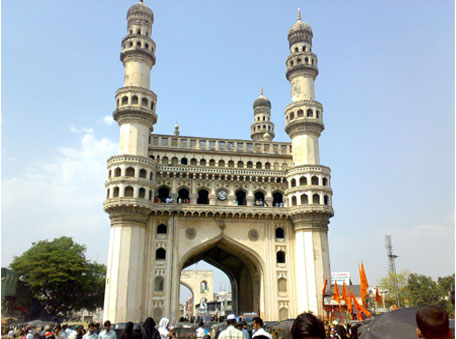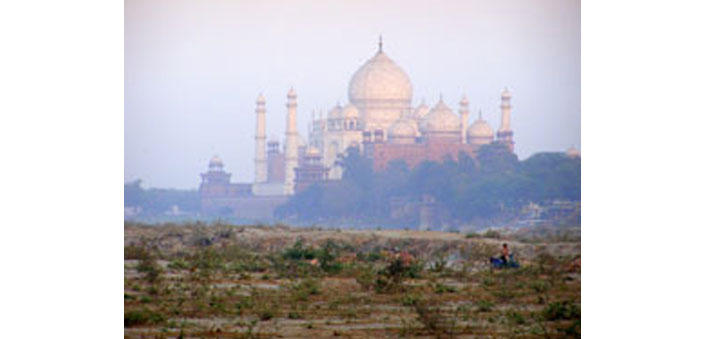With the advent of industrial revolution, degradation of buildings has become a reality. Though there are many reasons for the degradation, the principal reason may be attributed to air pollution. The air pollution in the form of acid rain is chiefly responsible. The pollutants that are principally responsible for acid rain are sulphur dioxide and nitrogen dioxides. These two are emitted from the combustion of fossil fuels like coal and oil. The rapid industrialisation has encouraged the quantity of these emissions.
In fact, almost all materials are affected by the deposition of acid, but the degree of damage or intensity may vary. Some of them are more susceptible to its effects such as carbon, steel, zinc, nickel, limestone, marble, paints and some plastics.
Effects of air pollution
Corrosion causing acids may attack the material both in wet and dry forms. Some of the pollutants in the gaseous form may fall close to the source of emissions causing direct damage. Sulphur dioxide frequently falls as dry deposition within 30 km of its source. Wet deposition of acids occurs when the pollutants are released in atmosphere. They react with water vapor present in clouds to form dilute acids. Sulphur dioxide, nitrogen dioxide and carbon dioxide are the most responsible pollutants causing damage to the material. The intensity of damage caused by sulphur dioxide is more compared to the other pollutants. Sulphuric acid mist in the atmosphere causes deterioration of structural materials such as marble sculptures, and buildings have suffered damage in the last 30 years as a result of increased sulphur dioxide content in the atmosphere.
The damage due to air pollution on materials is really a serious concern, since the service life of buildings is remarkably reduced. It is true that the intensity of manmade pollutants on building degradation is more than the impact of natural pollutants. Most important, the effects of soiling, degradation, corrosion and erosion caused by sulphur dioxide are very serious.
How does pollution affect our ancient monuments?
Most of the research studies reveal that the effect of acid deposition on modern structures is significantly less than the effect on ancient monuments. Almost all heritage structures are built with limestone and calcareous stones, which are most vulnerable to corrosion. Hence, continuous renovation and retrofitting is a must to protect our heritage. The historic structures all around the world are affected by acid rain.
The Taj Mahal, one of the Seven Wonders of the World, and India’s pride, greatest land mark is also being threatened from air and water pollution. The report submitted by the National Environment Engineering Research Institute shows how the 17th century monument is being damaged by air and water pollution. This is happening even after the remedial measures taken by the government.
The Ministry of Environment, Government of India, has conducted a survey to find out the facts of pollution on the celebrated tomb. The report has revealed that the pollution levels in terms of both air and water have risen to most significant and dangerous levels, as a result of accelerated growth in industry, traffic and population. Illegal and irrational constructions are springing up around the Taj Mahal, the heavily polluted water of the river Yamuna are also causing serious damage to the monument. An air pollution control programme was launched in 1998, when it was found the monument’s famous and peculiar white marble was turning yellow. The then American President Bill Clinton made an interesting statement that pollution had done, “what 350 years of wars, invasions and natural disasters have failed to do and begun to mar the magnificent walls of the Taj Mahal”.
A series of serious measures have been taken including banning vehicles till 500 meters away from the structure. It was also noticed that the fluctuations in ground water table have been threatening the structure and the water in the river Yamuna is continuously polluted by the discharge of effluents. Many experts declared that the measurable Total Particulate Suspended Matter (TSPM), Respirable Suspended Particulate Matter (RSPM) and oxides of sulphur and nitrogen are all posing huge threats to the ancient monument. According to Suryanarayana Murthy, a conservation architect, the organic matter that settle on the structure along with the dust leads to moth formation due to rains.
A few other monuments which are victims of environmental pollution are the Charminar, the Jama Masjid, Mecca Masjid and so on. Architects notice that high levels of the TSPM are the biggest threat to monuments. It was also identified by Murthy that the formation of the layer happens much faster on structures with a rough surface as in the case of the Mecca Masjid, compared to the structure with smooth and plastered surfaces like Charminar.

The Charminar, which is an iconic monument of Hyderabad, has been suffering from the deadly effects of air pollution. It was identified that the minarets of the monuments have developed air cracks at some places. It was decided by the Archaeological Survey of India (ASI) to take up repair activities at a cost of `10 lakh. In fact, ASI is authorised to look after its maintenance and it has also planned to take up a chemical wash of Charminar. According to available sources, it is believed that the air cracks formed might be the result of climatic change. The seepage of rain water and the dampness have also shown their impact on air cracks. The ASI has also identified that the vibrations produced by relentless movement of vehicles around it are not good for the Charminar. Hence, the ASI started an awareness programme called “Charminar Pedestranisation Project” to divert traffic away from Charminar.
Conclusion
The present contribution showed a general description on the current state of some of the historical structures. As far as the pollution on materials is concerned, the tropical climate with the presence of natural pollutants create conditions for deterioration of both metals and rocky materials. In fact, the present situation of historical structures is at critical junction. It is necessary that the government should initiate substantial measures to control the damage of structures. The awareness among the public is also important to stimulate the concerned authorities to initiate control and remedial measures. This paper tries to place the facts and bring awareness among the public and authorities.

